#EDGE Magazine
Text
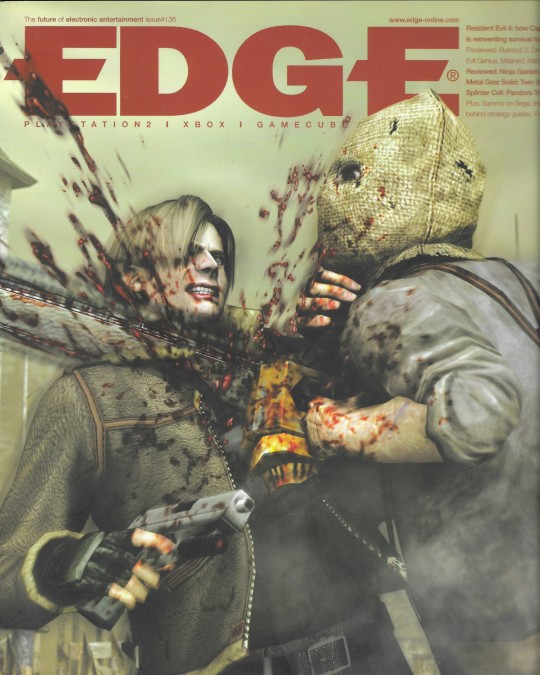
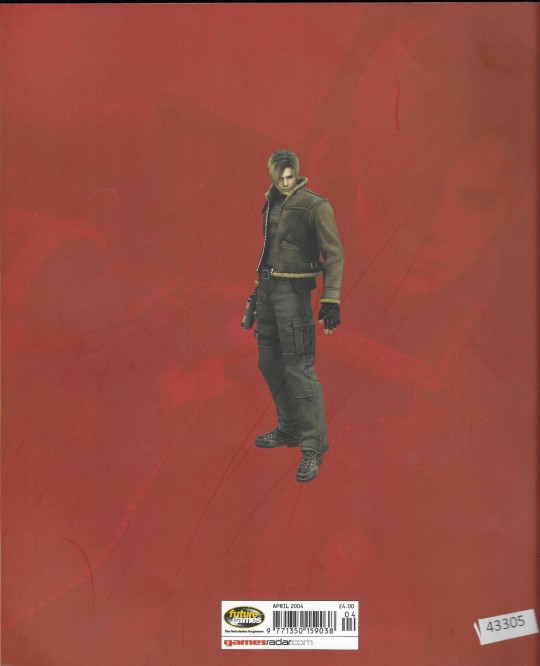
1K notes
·
View notes
Text

Edge Magazine – April 2004
97 notes
·
View notes
Text

Creations ad print in Edge magazine UK issue n°86 (2000)
217 notes
·
View notes
Text
Fun Fact: There are only six video games that received both a 10 out of 10 from EDGE and a 40 out of 40 from Famitsu.




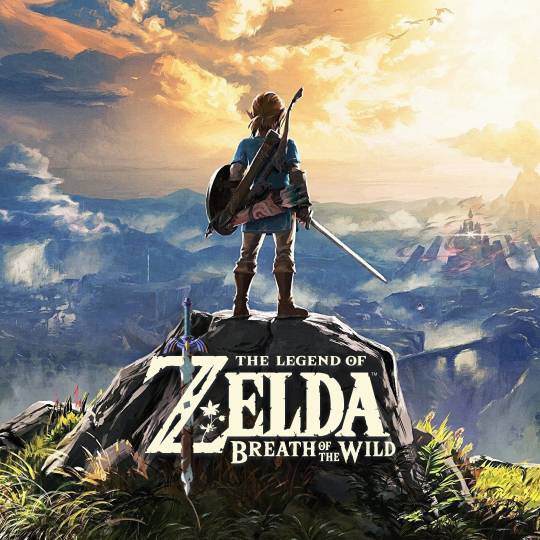

The Legend of Zelda Ocarina of Time (1998)
Bayonetta (2009)
The Legend of Zelda Skyward Sword (2011)
Grand Theft Auto V (2013)
The Legend of Zelda Breath of the Wild (2017)
The Legend of Zelda Tears of the Kingdom (2023)
#The Legend of Zelda#Ocarina of Time#Skyward Sword#Breath of the WIld#Tears of the Kingdom#Bayonetta#Grand Theft Auto#GTA 5#EDGE Magazine#Famitsu
155 notes
·
View notes
Text
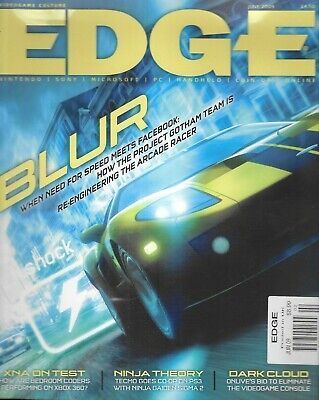


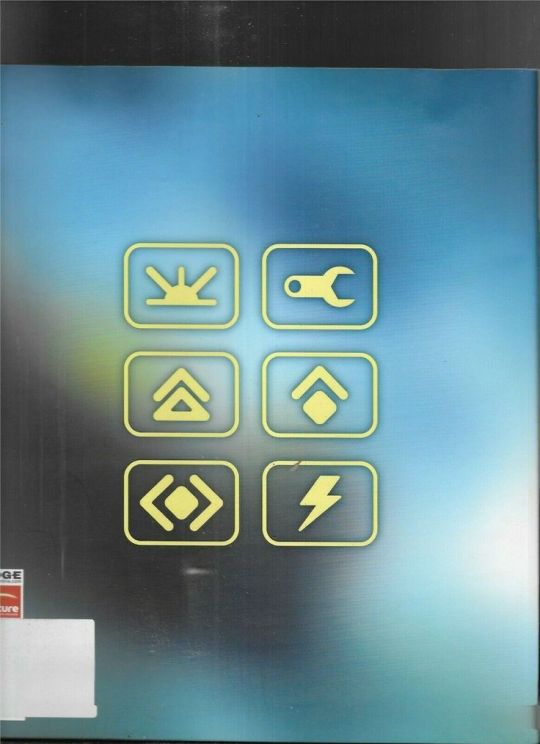
Edge Videogame Magazine Blur Ninja Theory Dark Cloud Crytek Studio Reviews 2009
#3d#2009#2000s#09#00s#art#auto#cars#cgi#cybercore#cyber y2k#design#edge magazine#future#futuristic#futurism#gaming#graphic design#graphics#kaybug#magazine covers#magazine#print#video games#y2kcore#y2kore#y2k aesthetic#y2k art#y2k core#y2k cyber
27 notes
·
View notes
Text
This week's newsletter! X-Men Forever ends! DIE Scenarios 1 is out! #newcomics hashtag thoughts! Why Edge magazine isn't the best brit games mag of all time and is (in fact) evil! Links! More!
25 notes
·
View notes
Text

Catching up with a rapidly-iterated early access game the way the gods intended, with a bunch of glossy paper that was printed and sent to my house.
What a cover image!
36 notes
·
View notes
Text


A Fang in the wild!
#goodbye volcano high#edge magazine#video game review#video games#indie games#gvh#bomb rush cyberfunk
42 notes
·
View notes
Text
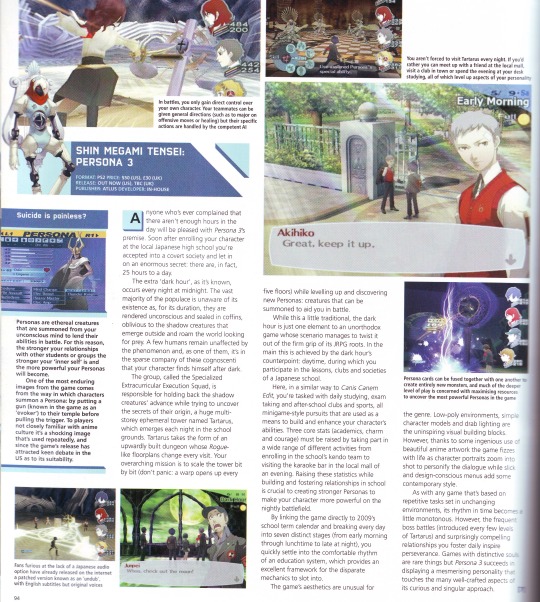
UK Edge Magazine Issue 181 - November 2007
Shin Megami Tensei: Persona 3 (vanilla) in Reviews
this article is actually reviewing the american version rather than the european one - only because persona 3 vanilla hadn't yet come out in europe ! the eu recieved vanilla on february 29th, 2008, half a year after america. often forgotten is that persona 3 was europe's first persona game (but not first SMT, beaten by nocturne in 2005), having missed revelations and eternal punishment entirely.
the review compares the gameplay of p3 to canis canem edit (bully, for all you ntscheads), and implies the reviewer opted for the kendo team in their playthrough ^_^
Transcription under the cut:
Shin Megami Tensei: Persona 3
Format: PS2
Price: $50 (US), £30 (UK)
Release: Out Now (US), TBC (UK)
Publisher: ATLUS
Developer: In-House
Suicide is painless?
Anyone who's ever complained that there aren't enough hours in the day will be pleased with Persona 3's premise. Soon after enrolling your character at the local Japanese high school you're accepted into a covert society and let in on an enormous secret: there are, in fact, 25 hours to a day.
The extra 'dark hour', as it's known, occurs every night at midnight. The vast majority of the populace is unaware of its existence as, for its duration, they are rendered unconscious and sealed in coffins, oblivious to the shadow creatures that emerge outside and roam the world looking for prey. A few humans remain unaffected by the phenomenon and, as one of them, it's in the sparse company of these cognoscenti that your character finds himself after dark.
The group, called the Specialized Extracurricular Execution Squad, is responsible for holding back the shadow creatures' advance while trying to uncover the secrets of their origin, a huge multi-storey ephemeral tower named Tartarus, which emerges each night in the school grounds. Tartarus takes the form of an upwardly built dungeon whose Rogue-like floorplans change every visit. Your overarching mission is to scale the tower bit by bit (don't panic: a warp opens up every five floors) while leveling up and discovering new Personas: creatures that can be summoned to aid you in battle.
While this is a little traditional, the dark hour is just one element to an unorthodox game whose scenario manages to twist it out of the firm grasp of its JRPG roots. In the main this is achieved by the dark hour's counterpoint: daytime, during which you participate in the lessons, clubs and societies of a Japanese school.
Here, in a similar way to Canis Canem Edit, you're tasked with daily studying, exam taking and after-school clubs and sports, all minigame-style pursuits that are used as a means to build and enhance your character's abilities. Three core stats (academics, charm and courage) must be raised by taking part in a wide range of different activities from enrolling in the school's kendo team to visiting the karaoke bar in the local mall of an evening. Raising these statistics while building and fostering relationships in school is crucial to creating stronger Personas to make your character more powerful on the nightly battlefield.
By linking the game directly to 2009's school term calendar and breaking every day into seven distinct stages (from early morning through lunchtime to late at night), you quickly settle into the comfortable rhythm of a education system, which provides an excellent framework for the disparate mechanics to slot into.
The game's aesthetics are unusual for the genre. Low-poly environments, simple character models and drab lighting are the uninspiring visual building blocks.
However, thanks to some ingenious use of beautiful anime artwork the game fizzes with life as character portraits zoom into shot to personify the dialogue while slick and design-conscious menus add some contemporary style.
As with any game that's based on repetitive tasks set in unchanging environments, its rhythm in time becomes a little monotonous. However, the frequent boss battles (introduced every few levels of Tartarus) and surprisingly compelling relationships you foster daily inspire perseverance. Games with distinctive souls are rare things but Persona 3 succeeds in displaying a mesmerising personality that touches the many well-crafted aspects of its curious and singular approach.
Captions, left to right:
Personas are ethereal creatures that are summoned from your unconscious mind to lend their abilities in battle. For this reason, the stronger your relationships with other students or groups the stronger your 'inner self' is and the more powerful your Personas will become.
One of the most enduring images from the game comes from the way in which characters summon a Persona: by putting a gun (known in the game as an 'evoker') to their temple before pulling the trigger. To players not closely familiar with anime culture it's a shocking image that's used repeatedly, and since the game's release has attracted keen debate in the US as to its suitability.
Fans furious at the lack of a Japanese audio option have already released on the internet a patched version known as an 'undub', with English subtitles but original voices.
In battles, you only gain direct control over your own character. Your teammates can be given general directions (such as to major on offensive moves or healing) but their specific actions are handled by the competent AI.
You aren't forced to visit Tartarus every night. If you'd rather you can meet up with a friend at the local mall, visit a club in town or spend the evening at your desk studying, all of which level up aspects of your personality.
Persona cards can be fused together with one another to create entirely new monsters, and much of the deeper level of play is concerned with maximising resources to uncover the most powerful Personas in the game.
#persona 3#edge magazine#i should probably have a tag for the info i uncover like this ehehe .. !#i havent seen scans of this magazine anywhere before :p and also i think pal video game history is so overlooked#sorry it's a bit wonky ! it's an odd size ^_^
13 notes
·
View notes
Text

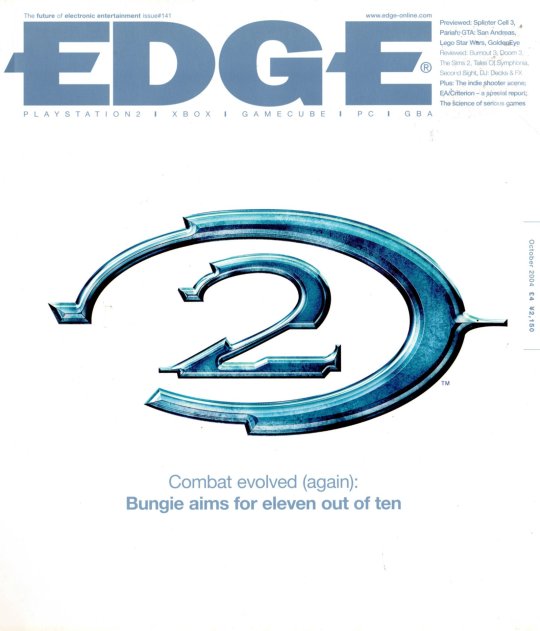

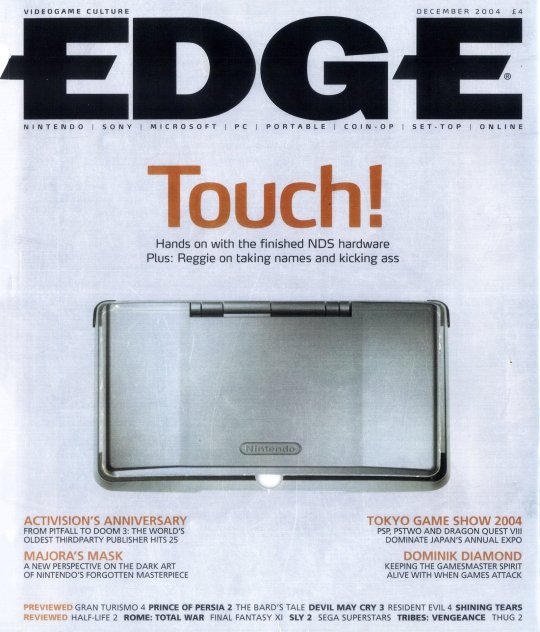
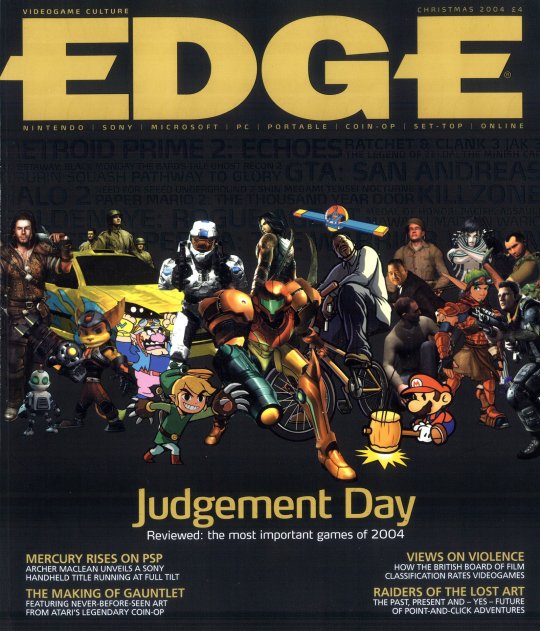
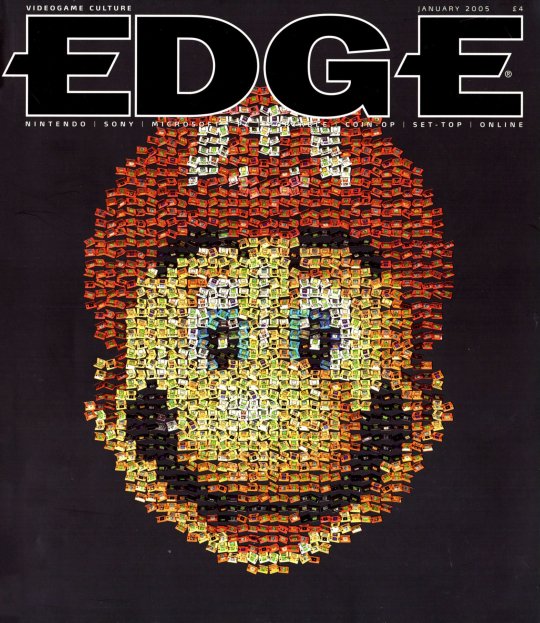
152 notes
·
View notes
Text

[x]
#alan wake 2#alan wake#magazine cover#edge magazine#links#videogames#horror games#remedy entertainment
16 notes
·
View notes
Photo



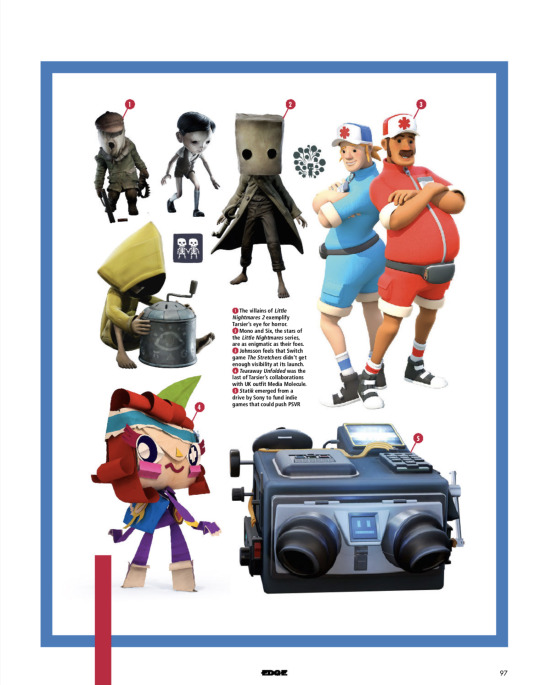
Edge magazine’s latest article on Tarsier Studios, which covers their founding, their notable collabs with other companies, and ideals for the studio going forward.
My two biggest takeaways from reading this are:
Team Tarsier’s ACTUAL first game was a puzzle game called “Tio” which, after being entered in a contest, won them the space and resources necessary to create TCoM in the first place. Some of Tio’s concepts were likely reused in TCoM as well.
The recent acquisition by Embracer is described as a positive development; CEO Andreas Johnsson claims it’s an important step towards smoother collaboration with other nearby studios and promoting a safer environment for people to pitch new ideas.
Also on Tarsier’s Instagram
Buy the full issue here
#tarsier studios#edge magazine#little nightmares#little nightmares 2#city of metronome#tio#tio (game)#starting a tag for this here and now ehehehe#the stretchers#media molecule#game journalism#kramblings
31 notes
·
View notes
Text

✝️ Edge Magazine – November 2000
87 notes
·
View notes
Video
youtube
EDGE Magazine
2 notes
·
View notes
Text
4 notes
·
View notes
Photo
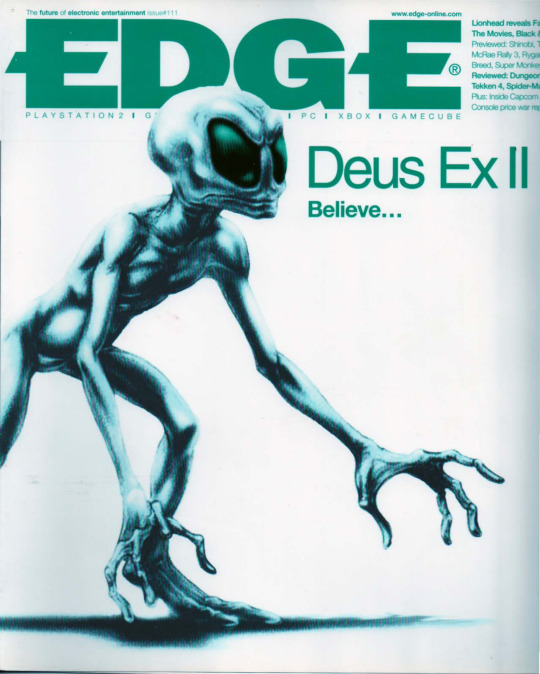



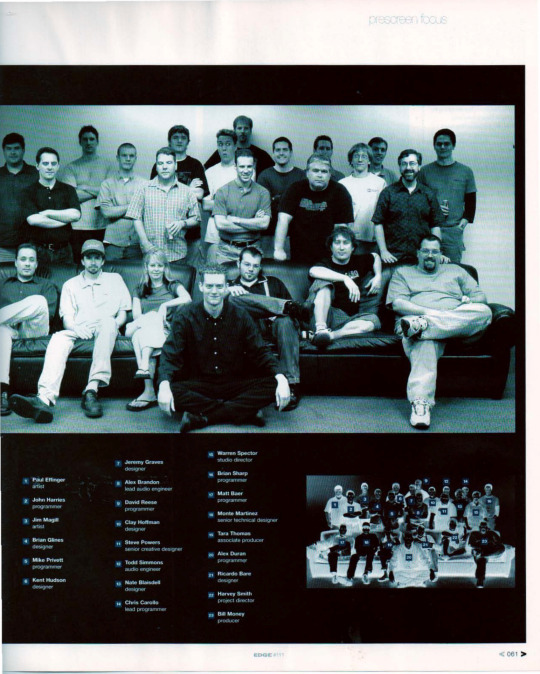


“Deus Ex II” (which would later become Invisible War) scans.
Edge Magazine Issue #111; 2002
21 notes
·
View notes
